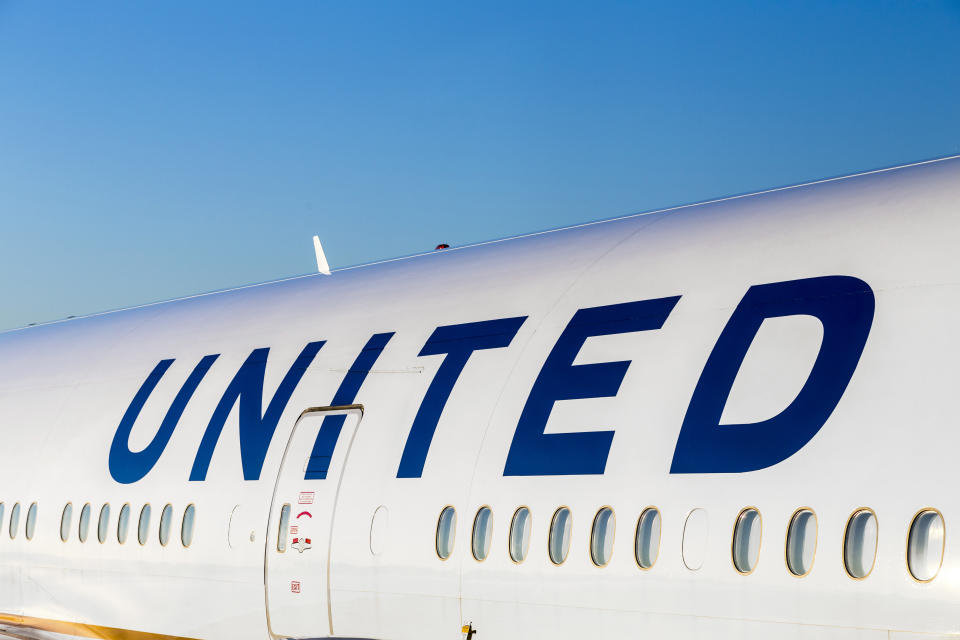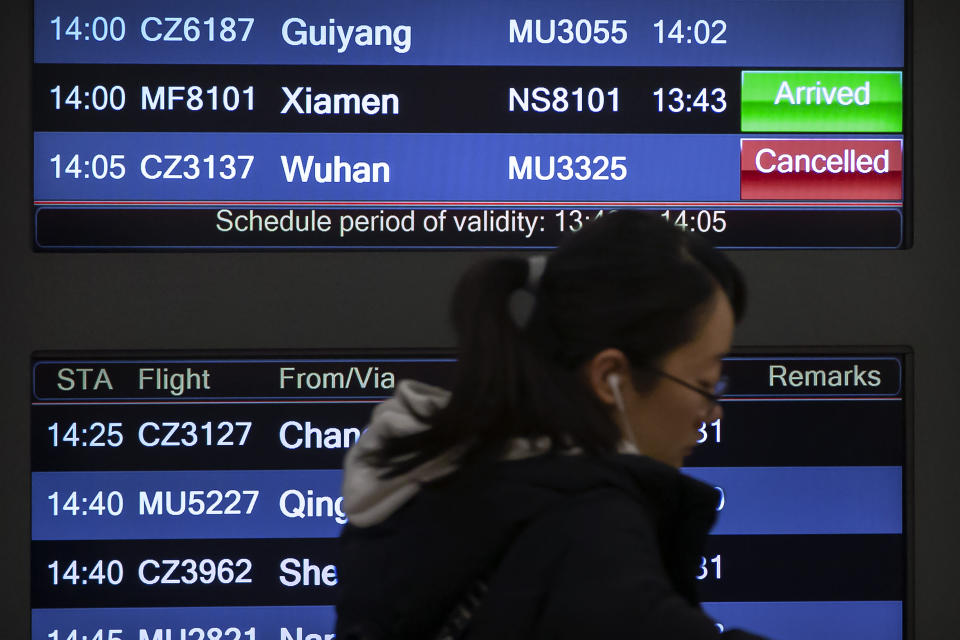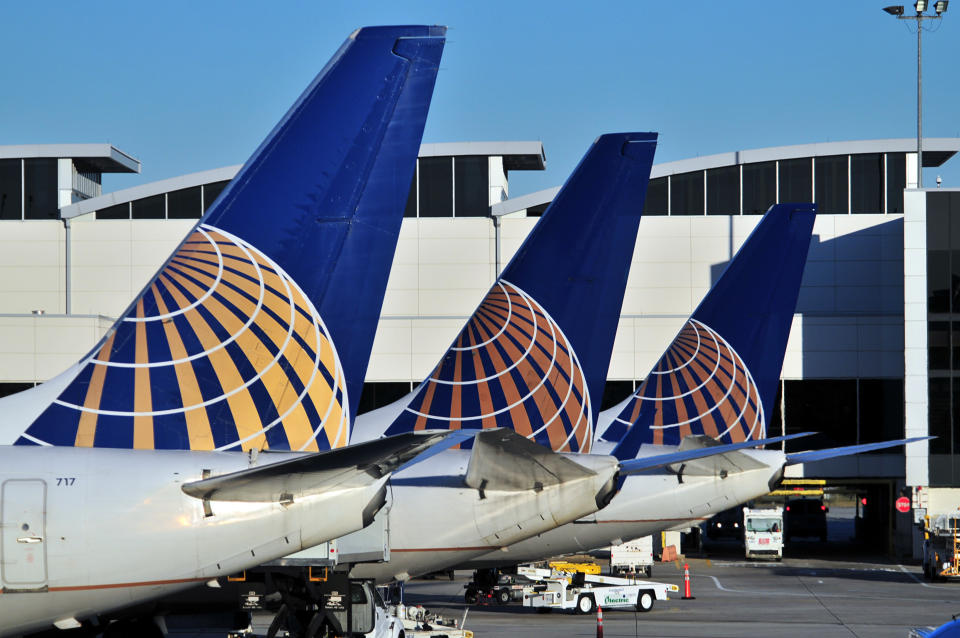Coronavirus has spurred 'unprecedented' wave of US flight cancellations, analyst says
Coronavirus is striking a blow to U.S. airlines’ bottom lines, as carriers have no choice but to wait out an indeterminable number of cancelled flights and decreased demand to and from China and Hong Kong.
Data from the U.S. Department of Transportation suggests that cancelled flights between U.S. cities and China and Hong Kong are costing the airlines between $313,000 to $1.1 million for each day those flights are cancelled, depending on the carrier.
“The scale of changes and cancellations is unprecedented,” John Grant, senior analyst with flight data firm OAG, told Yahoo Finance. “There has never been such a swift response in terms of cancellation of flights as we've been seeing with this particular event... It’s quite a dramatic change of strategy than was previously applied when SARS was here.”

United Airlines Holdings Inc. (UAL), Delta Air Lines Inc. (DAL) and American Airlines Group Inc. (AAL) comprise the group of U.S. carriers with routes between the U.S., China, and Hong Kong. All have issued temporary reductions and cancellations to service in response to health precautions, decreased demand and government advisories against travel to the region. Collectively, the “Big Three” domestic carriers generated more than $186 million during the third quarter of 2019 from travel between U.S. locations and China/Hong Kong.

Grant said U.S. airlines remain in a resilient position, compared to their Chinese counterparts, most significantly, China Eastern Airlines Corp. Ltd., (CEA), which has reduced its international capacity by more than 31%. Among U.S. passenger carriers, United runs the majority of U.S.-China routes, with service to the region representing about 5.2% of its monthly international revenue, according to OAG. The Wall Street Journal reports that China routes made up 7% of United’s total passenger traffic, last year.
The most recent data published by the U.S. Department of Transportation concerning U.S. carriers comes from third quarter 2019, which Grant said can serve as a proxy to estimate the airline’s future coronavirus-related losses.

During the third quarter, United’s revenue from U.S.-China and Hong Kong passenger routes, approximately 24 flights per day, totaled roughly $99 million or approximately $1.1 million per day. United began decreasing its service to mainland China the first week in February and halted all of its previously scheduled flights starting Feb. 6. The company said flights between the U.S. and Hong Kong will cease Feb. 7, with plans to resume service on Feb. 20. In a statement, United said flights to mainland China are currently planned to resume on March 28 while it continues to assess and adjust to the fluid situation.
“We remain in close contact with the [Centers for Disease and Control] CDC, as well as with authorities in the United States and Asia, to ensure the safety of our customers and employees,” a United spokesperson said in an email.
Delta Air Lines, the American carrier with the second largest number of U.S.-China flights, runs 42 flights per week, averaging about 6 flights per day. The company temporarily halted all service to China on Feb. 2. OAG said the routing represents about 2.6% of the airline’s monthly international revenue. For third quarter 2019, its China-route revenues totaled nearly $58 million or approximately $630,000 per day.
In a statement to Yahoo Finance, a Delta spokeswoman emphasized the airline’s China footprint as a small fraction of its revenue saying, “While it is too soon to know, it’s important to remember that China is approximately 2% of our revenue.”
Among the Big Three U.S. carriers, American Airlines derives the least amount of revenue from flights between the U.S., China, and Hong Kong. The company ran about 12 flights per day between the U.S., China, and Hong Kong before the outbreak. The routing represents about 2.1% of its monthly international revenue, according to OAG. Revenues for service to the region in the third quarter 2019 totaled $28 million or about $313,000 per day. The airline stopped all service to the region on Feb. 4, and currently plans to resume flights between Dallas-Fort Worth and Hong Kong on Feb. 21, and between Los Angeles and Hong Kong on March 27.
“The airline will continue to review its flight schedule to ensure that customers’ needs are accommodated and make additional refinements as needed,” a spokesperson for American said.
Grant said the planning horizon for most U.S. airlines at this point in the year likely extends no further than the end of October 2020.
Chinese authorities first reported the coronavirus outbreak to the World Health Organization (WHO) on Dec. 31.
Shares of the Big Three U.S. carriers were down slightly just after 12:30 p.m. EST Friday with United (UAL) down 1.53%, Delta (DAL) down 0.57% and American (AAL) down .74%.
Alexis Keenan is a reporter for Yahoo Finance. Follow her on Twitter @alexiskweed.
Follow Yahoo Finance on Twitter, Facebook, Instagram, Flipboard, LinkedIn, YouTube, and Reddit.
